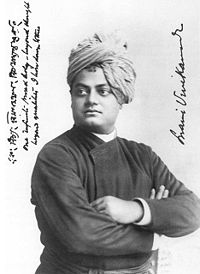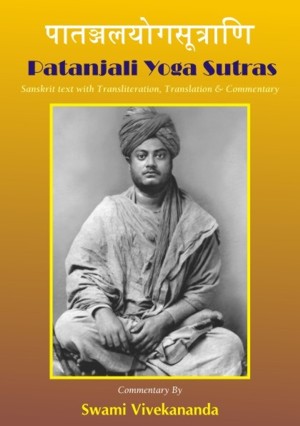30. व्याधि स्त्यान संशय प्रमादालस्याविरति भ्रान्तिदर्शनालब्धभूमिकत्वानवस्थितत्वानि चित्तविक्षेपाः ते अन्तरायाः ॥३०॥
vyādhi styāna saṁśaya pramāda-ālasya-avirati bhrāntidarśana-alabdha-bhūmikatva-anavasthitatvāni citta-vikṣepāḥ te antarāyāḥ ||30||
Disease, mental laziness, doubt, calmness, cessation, false perception, non-attaining concentration, and falling away from the state when obtained, are the obstructing distractions.
Disease. This body is the boat which will carry us to the other shore of the ocean of life. It must be taken care of. Unhealthy persons cannot be Yogis. Mental laziness makes us lose all lively interest in the subject, without which there will neither be the will nor the energy to practice. Doubts will arise in the mind about the truth of the science, however strong one’s intellectual conviction may be, until certain peculiar psychic experiences come, as hearing, or seeing, at a distance, etc. These glimpses strengthen the mind and make the student persevere. Falling away when attained. Some says or weeks when you are practising the mind will be calm and easily concentrated, and you will find yourself progressing fast. All of a sudden the progress will stop one day, and you will find yourself, as it were, stranded. Persevere. All progress proceeds by rise and fall.
31. दुःखदौर्मनस्याङ्गमेजयत्वश्वासप्रश्वासाः विक्षेप सहभुवः ॥३१॥
duḥkha-daurmanasya-aṅgamejayatva-śvāsapraśvāsāḥ vikṣepa sahabhuvaḥ ||31||
Grief, mental distress, tremor of the body and irregular breathing, accompany non-retention of concentration.
Concentration will bring perfect repose to mind and body every time it is practised. When the practice has been misdirected, or not enough controlled, these disturbances come. Repetition of Om and self-surrender to the Lord will strengthen the mind, and bring fresh energy. The nervous shakings will come to almost everyone. Do not mind them at all, but keep on practising. Practice will cure them, and make the seat firm.
32. तत्प्रतिषेधार्थमेकतत्त्वाभ्यासः ॥३२॥
tat-pratiṣedha-artham-eka-tattva-abhyāsaḥ ||32||
To remedy this practice of one subject (should be made).
Making the mind take the form of one object for some time will destroy these obstacles. This is general advice. In the following aphorisms it will be expanded and particularised. As one practice cannot suit everyone, various methods will be advanced, and everyone by actual experience will find out that which helps him most.
33. मैत्री करुणा मुदितोपेक्षाणांसुखदुःख पुण्यापुण्यविषयाणां भावनातः चित्तप्रसादनम् ॥३३॥
maitrī karuṇā mudito-pekṣāṇāṁ-sukha-duḥkha puṇya-apuṇya-viṣayāṇāṁ bhāvanātaḥ citta-prasādanam ||33||
Friendship, mercy, gladness, indifference, being thought of in regard to subjects, happy, unhappy, good and evil respectively, pacify the Chitta.
We must have these four sorts of ideas. We must have friendship for all; we must be merciful towards those that are in misery; when people are happy we ought to be happy, and to the wicked we must be indifferent. So with all subjects that come before us. If the subject is a good one, we shall feel friendly towards it; if the subject of thought is one that is miserable we must be merciful towards the subject. If it is good we must be glad, if it is evil we must be indifferent. These attitudes of the mind towards the different subjects that come before it will make the mind peaceful. Most of our difficulties in our daily lives come from being unable to hold our minds in this way. For instance, if a man does evil to us, instantly we want to react evil, and every reaction of evil shows that we are not able to hold the Chitta down; it comes out in waves towards the object, and we lose our power. Every reaction in the form of hatred or evil is so much loss to the mind, and every evil thought or deed of hatred, or any thought of reaction, if it is controlled, will be laid in our favour. It is not that we lose by thus restraining ourselves; we are gaining infinitely more than we suspect. Each time we suppress hatred, or a feeling of anger, it is so much good energy stored up in our favour; that piece of energy will be converting into the higher powers.
34. प्रच्छर्दनविधारणाभ्यां वा प्राणस्य ॥३४॥
pracchardana-vidhāraṇa-ābhyāṁ vā prāṇasya ||34||
By throwing out and restraining the Breath.
The word used in Prana. Prana is not exactly breath. It is the name for the energy that is in the universe. Whatever you see in the universe, whatever moves or works, or has life, is a manifestation of this Prana. the sum-total of the energy displayed in the universe is called Prana. This Prana, before a cycle begins, remains in an almost motionless state, and when the cycle begins this Prana begins to manifest itself. It is this Prana that is manifested as motion, as the nervous motion in human beings or animals, and the same Prana is manifesting as thought, and so on. The whole universe is a combination of Prana and Akasa; so is the human body. Out of Akasa you get the different materials that you feel, and see, and out of Prana all the various forces. Now this throwing out and restraining the Prana is what is called Pranayama. Patanjali, the father of the Yoga Philosophy, does not give many particular directions about Pranayama, but later on other Yogis found out various things about this Pranayama, and made of it a great science. With Patanjali ist is one of the many ways, but he does not lay much stress on it. He means that you simply throw the air out, and draw it in, and hold it for some time, that is all, and by that, the mind will become a little calmner. But, later on, you will find that out of this is evolved a particular science called Pranayama. We will hear a little of what thoese later Yogis have to say. Some of this I have told you before, but a little repetition will serve to fix it in your minds. First, you must remember that this Prana is not the breath. But that which causes the motion of the breath, that which is the vitality of the breath is the Prana. Again, the word Prana is used of all the senses; they are all called Prana, the mind is called Prana; and so we see that Prana is the name of a certain force. And yet we cannot call it force, because force is only the manifestation of it. It is that which manifests itself as force and everything else in the way of motion. The Chitta, the mind-stuff, is the engine which draws in the Prana from the surroundings, and manufactures out of this Prana the various vital forces. First of all the forces that keep the body in preservation, and lastly thought, will, and all other powers. By this process of breathing we can control all the various motions in the body, and the various nerve currents that are running through the body. First we begin to recognise them, and then we slowly get control over them. Now these later Yogis consider that there are three main currents of this Prana in the human body. One they call Ida, another Pingala, and the third Susumna. Pingala, according to them, is on the right side of the spinal column, and the Ida is on the left side, and in the middle of this spinal column is the Susumna, a vacant channel. Ida and Pingala, according to them, are the currents working in every man, and through these currents, we are performing all the functions of life. Susumna is present in all, as a possibility; but it works only in the Yogi. You must remember that the Yogi changes his body; as you go on practising your body changes; it is not the same body that you had before the practice. That is very rational, and can be explained, because every new thought that we have must make, as it were, a new channel through the brain, and that explains the tremendous conservatism of human nature. Human nature likes to run through the ruts that are already there, because it is easy. If we think, just for example’s sake, that the mind is like a needle, and the brain substance a soft lump before it, then each thought that we have makes a street, as it were, in the brain, and this street would close up, but that the grey matter comes and makes a lining to keep it separate. If there were no grey matter there would be no memory, because memory means going over these old streets, retracing a thought as it were. Now perhaps you have remarked that when I talk on subjects that in which I take a few ideas that are familiar to everyone, and combine, and recombine them, it is easy to follow, because these channels are present in everyone’s brain, and it is only necessary to recur to them. But whenever a new subject comes new channels have to be made, so it is not understood so readily. And that is why the brain (it is the brain, and not the people themselves) refuses unconsciously to be acted upon by new ideas. It resists. The Prana is trying to make new channels, and the brain will not allow it. This is the secret of conservatism. The less channels there have been in the brain, and the less the needle of the Prana has made these passages, the more conservative will be the brain, the more it will struggle against new thoughts. The more thoughtful the mane, the more complicated will be the streets in his brain, and the more easily he will take to new ideas, and understand them. So with every fresh idea; we make a new impression in the brain, cut new channels though the brain-stuff, and that is why we find that in the practice of Yoga (it being an entirely new set of thoughts and motives) there is so much physical resistance at first. That is why we find that the part of religion which deals with the world side of nature can be so widely accpeted, while the other part, the Philosophy, or the Psychology, which deals with the inner nature of man, is so frequently neglected. We must remember the definition of this world of ours; it is only the Infinite Existence projected into the plane of consciousness. A little of the Infinite is projected into consciousness, and that we call our world. So there is an Infinite beyond, and religion has to deal with both, with th elittle lump we call our world, and with the Infinite beyond. Any religion which deals alone with either one of these two will be defective. It must deal with both. That part of religion which deals with this part of the Infinite which has come into this plane of consciousness, got itself caught, as it were, in the plane of consciousness, in the case of time, space, and causation, is quite familiar to us, because we are in that already, and ideas about this world have been with us almost from time immemorial. The part of religion which deals with the Infinite beyond comes entirely new to us, and getting ideas about it produces new channels in the brain, disturbing the whole system, and that is why you find in the practice of Yoga ordinary people are at first turned out of their groove. In order to lesson these disturbances as much as possible all these methods are devised by Patanjali, that we may practice any one of them best suited to us.
 Swami Vivekananda
Swami Vivekananda
